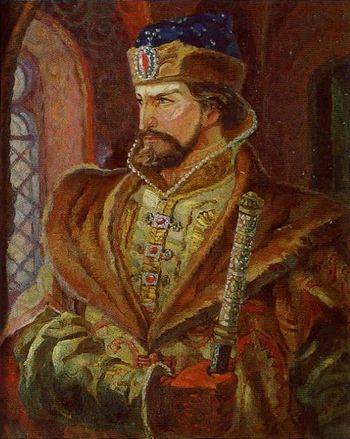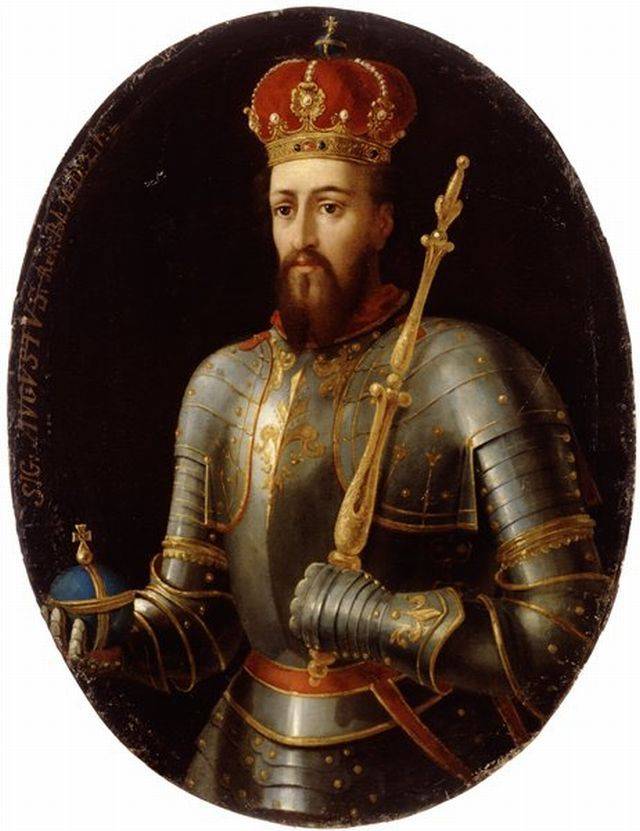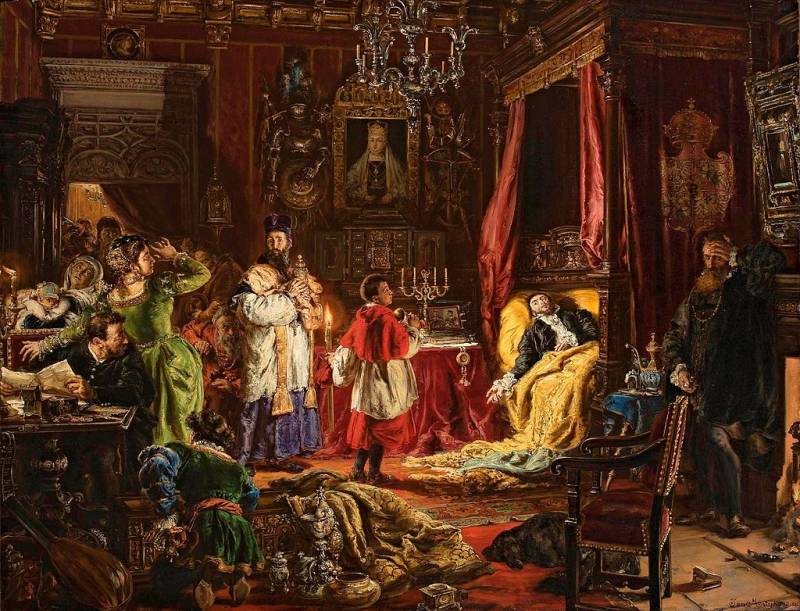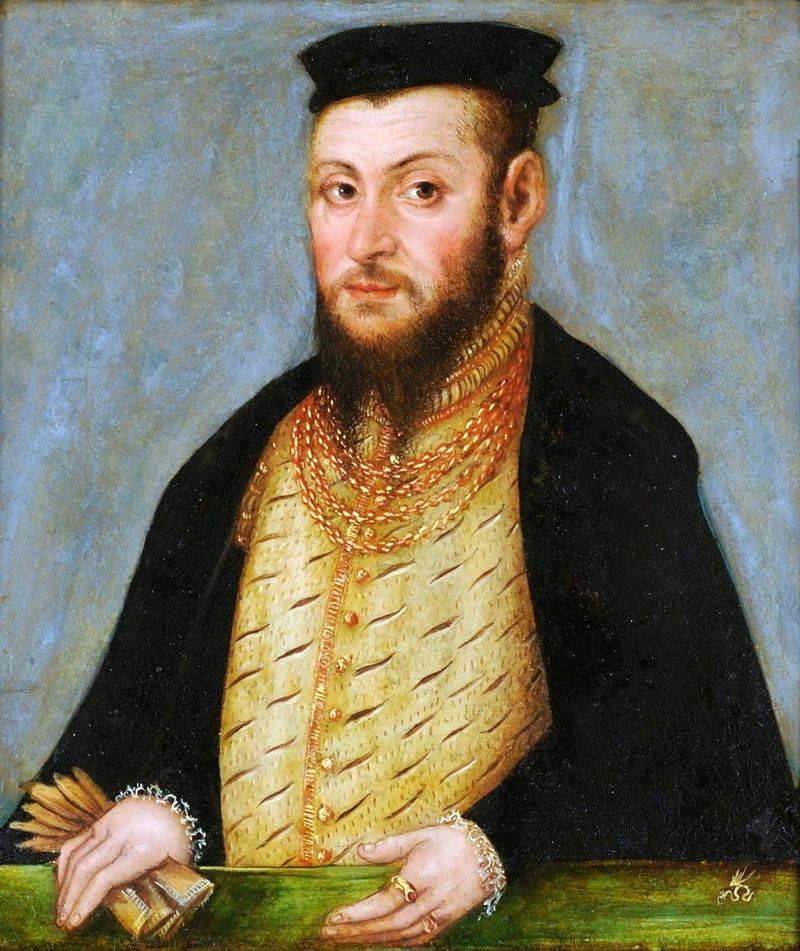Ivan the Terrible and the Polish crown. The tale of how the Poles invited Grozny to take the royal throne

There was one unique event in the life of the great king, which is not written about in any textbook, not shown in any series.
Imagine that citizens, senators of the upper and lower houses of the US Congress signed a petition and invited Vladimir Vladimirovich to the post of President of the United States of America. Or, to draw a more correct parallel, suppose that the parliamentarians, the intelligentsia of Poland, sent their representatives to Moscow and asked Putin to become their president.
We understand that this is unimaginable. But in the life of Grozny it was.

V. E. Shambarov in the book "The Tsar of Terrible Rus'" writes:
The king died on July 7, 1572, this was before the victory at the Battle of Molodi. It was when the question was being decided: to be Moscow or not to be? Will Moscow be an Ottoman-Crimean vassal or not?
You ask: but what about Kurbsky's notes? What about the oprichnina, which everyone criticized so much? What about the countless unreasonable executions of Ivan the Terrible?
Lampoons Kurbsky wrote for many reasons.
First, to justify his betrayal and escape.
Secondly, to help the Polish king raise an army against Grozny. At one time, when Sigismund needed to spread information discrediting the king, he turned to a fugitive traitor. But the customer knew that everything written on his order was a lie.
After the death of Sigismund, Kurbsky again took up the old.
In an era when Poland and the Grand Duchy of Lithuania and Russia were left without a king, if Grozny were elected the Polish king, then Kurbsky would be threatened again with becoming a subject of the king. He had nowhere else to run. On other lands, with other rulers, he would not have been given lands and money. The only salvation for him was the denigration of the candidate for the Polish throne in the eyes of the voters.
Therefore, as some historians write, back in 1570, two years before the death of the king, the Polish-Lithuanian ambassadors told the tsar that, since the king had no male heir, they wanted a ruler of a Slavic family for Poland and the Grand Duchy, or rather, Grozny as their future king.
Now Kurbsky himself and those tycoons-oligarchs who did not want to see Grozny as their king needed black lies. The new customers needed a "fresh portion" of lies discrediting the king, as the old fables had gone out of fashion.
The fugitive prince began to collect rumors, distort them and create new ones. V. A. Mazurov writes:
And then King Sigismund II died, leaving no heirs.

A month later, a devastating victory broke out over the Crimean Khanate and Devlet Giray in the battle of Molodi. It can be called the victorious battle for Moscow of the Middle Ages. This event made a huge impression on Europe.
Three people claimed the Polish-Lithuanian throne: the German emperor Maximilian II, the French prince Henry of Anjou (Valois) and the Russian Tsar Ivan IV or his crown princes. But the candidacy of Ivan Vasilievich enjoyed the most support. As the historian K. Valishevsky writes, in Poland the fashion for everything Moscow has gone.
But Grozny refused the seemingly tempting offer.

He knew perfectly well that although the Polish crown was made of precious metal and studded with stones, all that glitters was not gold. K. Valishevsky provides the following information:
If Ivan is suitable, then let Poland act as it should. Let him come to him and beat with his forehead, like all those who come to him daily to ask for some kind of mercy.
He said that it was not an example for him that the emperor and the French king sent gifts to voters in Warsaw. In fact, there are no sovereigns in Europe who would have descended from a continuously reigning house for more than 200 years, except for a descendant of the Roman Caesars and the Turkish Sultan.
Everyone knows this, and Ivan does not need to beg for favors like others” [3].
The tsar did not want to get involved with the Poles, let alone give bribes, in order to be a "nominal king."
It is necessary to pay attention to the political structure of Poland.
The Commonwealth is a common state of both peoples - Polish and Lithuanian, which was understood as the totality of representatives of the gentry class of the Kingdom of Poland and the Grand Duchy of Lithuania and Russia.
“The Commonwealth” in Latin - Res Publica, reads like “republic”, in Polish Rzeczpospolita, where “rzecz” is a thing, “pospolita” is a common thing, which translates as “common cause” or “common thing”.
The supreme power belonged to a monarch elected for life, who bore the single title of King of Poland and Grand Duke of Lithuania. But the monarch did not have the right to transfer the throne by inheritance, to issue decrees or decrees that contradicted the laws, or to arrest a gentry without trial. The monarch was obliged to rule in accordance with the royal council, consisting of 18 senators, and at least twice a year was obliged to convene the Sejm, without whose permission he had no right to declare war, peace, even to assemble an army for defense against attacked enemies, he still had no right without the consent of the Seimas to introduce new taxes.
A strange position for a king, isn't it?
The subjects of the Polish king longed to see Grozny on the Polish throne, seeing him as a protector.
The reasons for this are N. M. Pronina:
And the decision-making by the panamirada very often dragged on for months and years, turning into a bargaining for new "rights and liberties."
All this made the main population of the state practically defenseless from external intrusions - especially from neighboring Crimea. So the glorious "golden liberty" turned into chaos, disasters.
And the freedom-loving gentry republic increasingly looked in the direction of autocratic Moscow ...
The unprecedentedly powerful defeat of the Crimean horde carried out by the Russian sovereign in the summer of 1572 only strengthened his authority in the eyes of the gentry. The Commonwealth was ready to immediately recognize Ivan the Terrible as its king.
The pans expected bribes from the tsar so that they would cast their votes for Grozny, and not for the French or German candidate, but at the same time they were preparing a trap.
N. M. Pronina deciphers:
If Fedor was elected, Russia was to give Smolensk, Polotsk with the surrounding fortresses and "other castles and volosts" to the Commonwealth.
Finally, together with Fedor, Tsar Ivan and the heir to Tsarevich Ivan Ivanovich were to sign an obligation to preserve all the gentry's liberties and, if necessary, expand them (the rampant oligarchy - Approx. Aut.).
Terrible, of course, could not allow such a thing.
His answer to Garaburde was sharp. “The crown is not new to me, but my son (Fyodor) is young, and it is not possible for him to rule the state. And he is not a girl to give you a dowry for him” [4].
In films, we hear the phrase “make an offer that cannot be refused”, but the wise tsar made such an offer that it became unacceptable and the pans from the gladness themselves refused it - he would agree to take the throne if there was not a political union, but hereditary possession of Polish throne for him and his descendants, freedom for Orthodoxy in Poland and the Grand Duchy of Lithuania and Russia, no concessions to Poland from Muscovite Russia, but the return of the city of Kiev to Moscow.
N. M. Pronina writes:
By naming the Austrian Archduke Ernest as a candidate for the Polish crown, the Russian tsar, as it were, gave an effective answer to his father, the German emperor Maximilian II, back in the past, in 1572, who sent his letter to Ivan ...
The Holy Roman Empire of the German nation for many centuries longed to acquire the lands of western Poland. Get them by dividing them with Russia” [4].
It would be a "checkmate" to the Polish crown.
In other words, Ivan had a good opportunity without wars and without operetta "elections to kings" to return to the Moscow kingdom the lands lost by the former Rurikovichs. The agreement was made. The king decided to support the proposal of the emperor.
Rumors about this treaty caused a real panic in the Commonwealth and forced the nobles to hurry up with the election of the king. In 1573, it was the French prince Heinrich of Valois” [4].
It would seem that the Poles received a "noble" Frenchman, but very soon the Polish throne was empty again.
Between the Poles and the French, mutual hatred was ignited at first sight.
Heinrich of Valois was bored with the Poles, he did not know the Polish language, but did not want to learn. The Poles thought he was lazy and stupid. This is how his stay in Poland is described: “...his behavior has become one continuous disappointment. Heinrich did not care about the affairs of government and spent his time in the company of the fair sex and numerous Frenchmen, whom he, to the great annoyance of the Poles, brought with him.
Henry of Valois received a letter from which he learned that his brother, the French king Charles IX, had died. Once the thief Kurbsky fled to Poland, taking not only his own, but also stolen gold, in exactly the same way, but Heinrich of Valois also fled from the pans, taking Polish gold, to become the new French king. And the Poles, already in large numbers, began to turn their eyes again to Grozny.

But then the Ottoman Sultan intervened. Polish historian K. Valishevsky gives the following:
The Poles had a choice: "Life or Batory"?
On December 12, 1575, a significant part of the Polish aristocracy (senate) cast their votes for the German Emperor Maximilian II of Habsburg. Two days later, on December 15, 1575, the remaining smaller part of the electoral Sejm voted for the Hungarian Bathory. Both were proclaimed monarchs and both received an invitation, no one refused the offer.
Either empty or dense on the Polish throne. The impudent Hungarian swore allegiance to the Polish nobility, went to Krakow and was crowned. But since he was supported by a minority, for two years (1576 and 1577) he suppressed the resistance of the supporters of Maximilian II. Cannon fire rained down on the city of Danzig (Gdansk). These actions showed that it was not worth waiting for something good from such a king, both for his own and for the Russians.
The Roman Catholic Church took part in the game for the Polish throne. Outwardly, she contributed to the fact that Maximilian II reigned on the Polish throne. Soon the German king dies, and his son becomes a pretender to the Polish throne. He was crowned by the Vatican, he became Rudolph II, King of Germany, elected Holy Roman Emperor, received the nominal title of King of the Romans.
The Pope did not want to strengthen the Habsburgs in Europe. The papacy and the European monarchs pursued the goal - it was Batory who should become king. They needed a new European Fuhrer of the Middle Ages, a predecessor of Hitler, who would lead the European peoples against the Russians and the peoples associated with them.
But Grozny defeated the European Reich, won an informational and military victory in the "Battle of Stalingrad of the Middle Ages", which was won in Pskov.
Bibliography:
[1] Shambarov V. E. "The Tsar of Terrible Rus'" Electronic edition of the book.
[2] Mazurov V. A. Truth and lies about Ivan the Terrible. 2018. S. 55.
[3] Valishevsky K. Ivan the Terrible. Historical essay. 1993, pp. 193–194.
[4] Pronina N. M. Ivan the Terrible without lies. martyr of power. 2013.
[5] Ivan the Terrible and the Jesuits: the mission of Antonio Possevino in Moscow. 2005. S. 16.
[6] Valishevsky K. Ivan the Terrible. Historical essay. 1993. S. 197.
Information